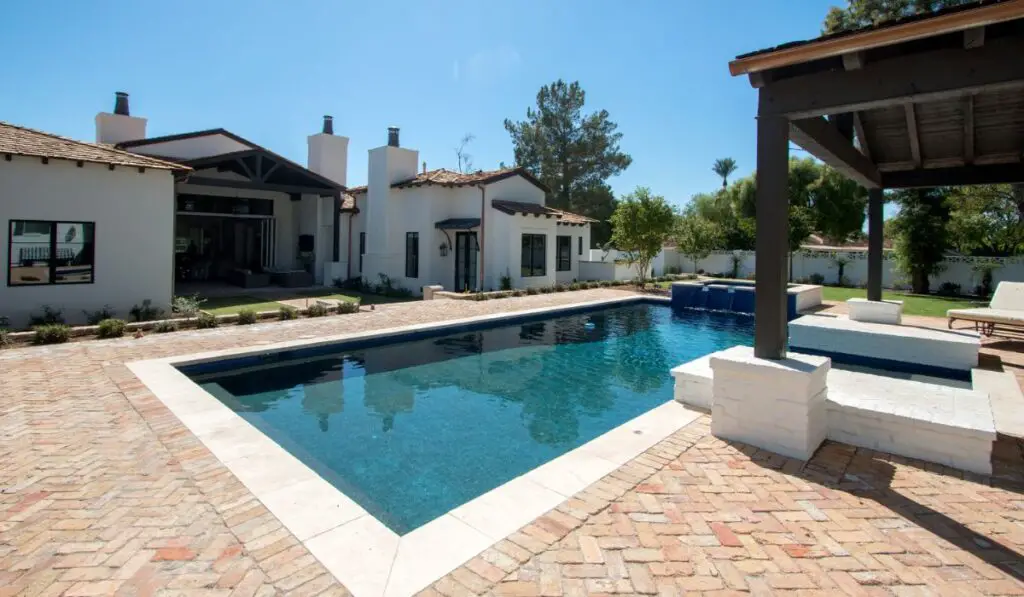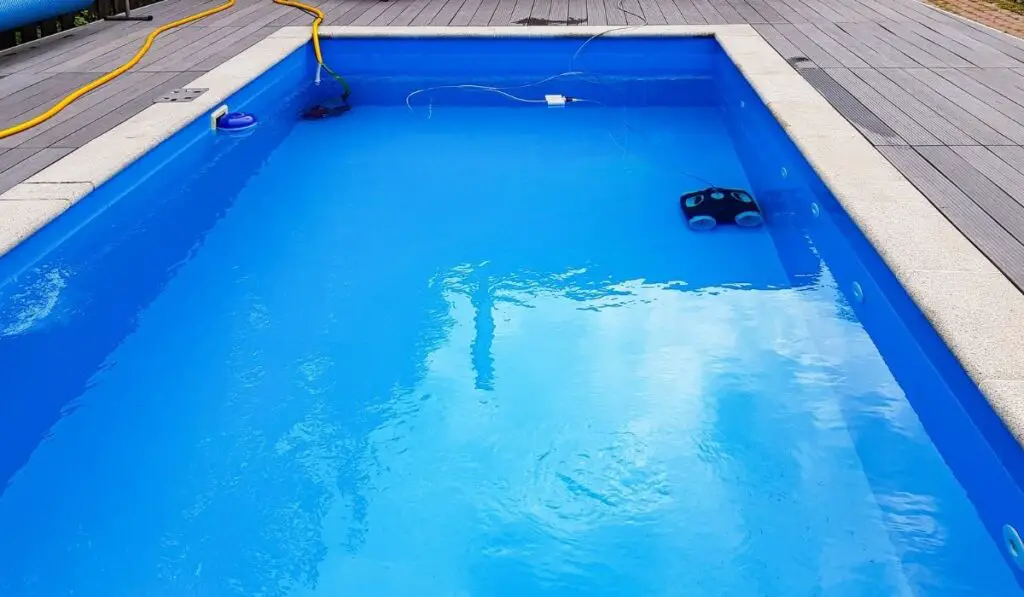As soon as the summer heat hits, everyone’s thoughts turn to swimming pools. After all, what’s more fun than cooling off in a pool on a hot day? However, setting up the pool for the season takes more than simply turning on the hose, and it’s important to open a pool at the right time. So, when do swimming pools open?
Most pools in the United States open between late March and early April, although this varies by location. The ideal time to open a pool is when the temperature is consistently above 70 degrees, to avoid frost damage and take advantage of easier maintenance before algae takes hold.
Before you open a pool, you’ll want to ensure that it’s clean and in good repair. This means checking the pH levels, cleaning the filter, and ensuring there are no leaks. Once you’ve done all that, you can open your pool and enjoy it all season long. Let’s look at a few factors that will help you decide when to open your pool and how to prepare it for summer.
When’s the Best Time to Open a Swimming Pool?

Weather plays the most significant role in your decision of when to open your pool for the summer. If you live in an area with a long, hot summer, you’ll probably want to open your pool as early as possible so that you can enjoy it for as long as possible.
However, if you live in an area with a shorter summer season or cooler temperatures, you may want to wait a bit longer to open your pool.
In general, pools are opened sometime between late March and early April. A rule of thumb is to open your pool when the temperatures outside are consistently above 70 degrees Fahrenheit.
Of course, there are always exceptions to the rule. If you have a pool heater, you may be able to open your pool earlier than usual. Conversely, if your pool is in an area with a lot of wind or sun, you may want to wait until the weather is a bit more stable before opening it.
All that said, an early opening is always better than a late one. Of course, you’ll get more pool time with an early opening, but it also has practical applications.
For example, the risk of algae growth is also higher in warmer weather since they can’t grow in winter, so an early opening gives you a chance to get ahead of any potential problems. You’ll also get more time to look for any damage that may have occurred over the winter and make any necessary repairs.
Tips for Opening Your Pool
If you’ve decided to open your pool, here are a few tips to make the process go smoothly:
- Clean the surrounding area before removing the covers. This will make the job much easier and prevent dirt or debris from falling into the pool.
- Keep an inventory of necessary pool chemicals on hand so you can add them as soon as the pool opens. This will help prevent any unwanted algae or bacteria growth.
- Your first step after removing the covers should be cleaning and inspecting pool equipment, including the filter, pump, and ladder. Remove freezing plugs, check for damage, and ensure everything is in working order.
- Increase the water level to the middle of the skimmer opening. Then, start the cleaning process by skimming the surface to remove any leaves or debris. Vacuum the bottom and sides to remove any dirt or grime built up over the winter. Prime the pump and do a final sweep of the pool.
- Once the pool is clean, it’s time to add chemicals. Always test the water first to see what levels need to be adjusted. Then add the chemicals according to the manufacturer’s instructions.
- Usually, the chemicals go in the following order: pH balancer, Sanitizer (Chlorine), pool shock, Hardness removal (Calcium chlorite), and Algaecide, followed by a second dose of pH balancer if needed.
- Give appropriate time for the chemicals to circulate and evenly work throughout the entire pool. Each chemical has a different time requirement, so follow the manufacturer’s instructions.
- Regularly test the water to ensure the pH and chlorine levels are where they should be.
How Soon You Can Swim After Filling A Pool?

How soon you can jump in the pool depends on what type of chemicals you’ve added and how long it takes for the chemicals to dissipate. Below is a chart outlining the waiting period for each type of chemical.
- Pool Shock (Chlorine): Newly filled pools need a shock treatment (on Amazon) to kill bacteria and other contaminants. After shocking, you’ll need to wait until the chlorine level drops below 5 PPM before swimming. This usually takes around 24 hours.
- Algaecide: Wait until the algaecide (on Amazon) is mixed throughout the pool before swimming. This could take a few minutes for small pools and a few hours for larger pools.
- pH Balancer: Wait for at least half an hour after adding the pH balancer (on Amazon).
- Liquid Chlorine: It depends on the level of liquid chlorine (on Amazon). You should usually 2-4 hours after adding the chlorine.
- Flocculant: Since flocculant (on Amazon) removes particles from the water, you’ll need to wait until the particles have settled at the bottom of the pool and then vacuum them up. This could take a few hours or even overnight.
- Calcium Chloride: You’ll need to wait until the water completes one cycle through the filter before swimming after adding calcium chloride (on Amazon). This could take anywhere from 3-6 hours.
